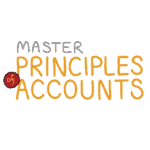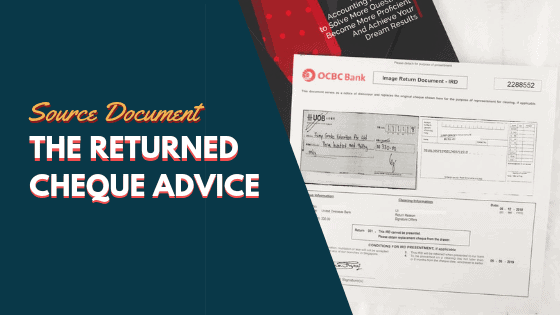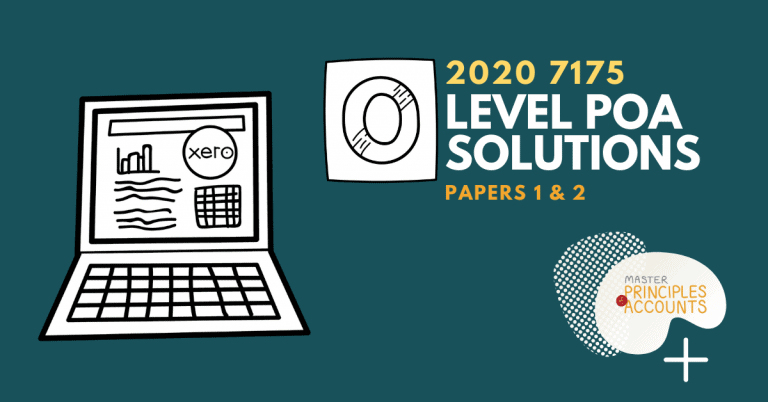2021 GCE O Level Paper 1 Solutions (7087 and 7175)
2021 O Level POA Paper 1 Answers is LIVE now. Thanks to the contributions from Redditors and students from Master Principles of Accounts.
7087 POA Paper 1 (New Syllabus)
This is the first year the 7087 Principles of Accounts syllabus is being tested.
Overall, very similar to the preceding year’s topic and question style with only one new sub-topic being tested – the trade receivable turnover ratio.

1. ai) 1 July 2019- The business obtained a bank loan of $40,000
(ii)30 June 2020- The business repaid $8000 of the bank loan by cheque
(b)(i) 1 January 2020- The business reversed the adjustment made for $1200 owed in the previous financial year
(ii)30 june 2020- The business paid interest expense of $2400 by cheque
(c) Statement of financial performance (extract) for the year ended 31 December 2020
| Less: other expense | $ | $ |
| Interest expense | 2160 |
(d) Statement of financial position (extract) as at 31 December 2020
| Non-current liabilities | $ | $ |
| Long term borrowings (32,000-8000) | 24000 | |
| Current liabilities | ||
| Current -portion of long term borrowings | 8000 | |
| Interest expense payable | 960 |
(e) A bank loan is recorded as a non-current liability in the statement of financial position while a bank overdraft is recorded as a current liability in the statement of financial position.
(f) Name: Accrual basis of accounting
Explanation: According to accrual basis of accounting expenses are represented in the financial period that the services have been used in/that the expense is incurred regardless of when payment is made

2. (a)
(i) Asset- Resources a business owns or controls that are expected to provide future benefits
(ii) liability- Obligations owed by a business to other that are expected to be settled in the future
(iii) Income- Amounts earned from the activities of a business
(iv) Expense- Cost incurred to earn the income in the same accounting period
(b)
Total equity= 50,000 + 80,000 =$130,000
Total liabilities= 7,800 + 1,200 + 10,000 =$19,000
Total assets= 130,000 +19,000 =$149,000
Net book value= 149,000 – 13,500 – 12,000 =$123,500
(c) In accordance to the consistency theory, once an accounting method is chosen, this method should be applied to all future accounting periods to enable meaningful comparison

3a) Journal
| Dr $ | Cr $ | |
| Equipment (5400-4500) | 900 | |
| Trade payable- bernardo | 900 |
(b)
| Overstated $ | Understated $ | No effect | |
| Error 2 | 60 | ||
| Error 3 | ✓ | ||
| Error 4 | 75 |
(c) Accounting entity theory states that the activities of a business and the actions of the owner are separate entities. All transactions should be recorded from the point of view of the business.

4a)
| 30 september 2020 | 30 september 2021 | |
| Workings | [(17,200+25,500)÷2] _______________ x 365 278,500 | [(25,500+34,000) ÷2]________________ x 365 299,250 |
| Trade receivables collection period (days) | 27.98 days | 36.29 days |
(b) The trade receivables collection period has worsened from 27.98 days in 2020 to 36.29 days in 2021. This shows that the business is taking a longer time to collect payment from it’s credit customers this year as compared to last year. In fact the trade receivables collection period on 30 September 2021 has exceeded the
credit terms of the business of 30 days.
This would also mean that over the two years, Ping’s business runs a higher credit risk as the
business might be facing difficulties in collecting payments from its trade receivable and hence is
less efficient in managing its trade receivables.
(c) 1. Offer cash discounts to encourage credit customers to pay early.
2. Ensure credit is granted to customers who are financially able
d) Any two from:
Economic outlook
Industryoutlook
Reputation of customers
Repayment history
(e)
Prudence theory
7175 POA Paper 1 (Old Syllabus)
This is the final year where 7175 POA syllabus is tested. With the common last topics removed, the overall attainable marks falls to 26 (instead of 40). This means that every mistake resulting in a mark lost is a heavier weightage in %.

1a) The purpose of a petty cash fund is for the payment of small items of expenditure
b) Advantages of petty cash system:
- Reduce/limits loss of cash due to theft or fraud
- Segregation of duties
ci) Imprest amount = $52 + $98 = $150
ii) Amount of reimbursement =
$22 + $18 +$15 = $55
d) The objectivity concept states that every transaction must be supported by a source document that is free from bias and verifiable.
e) Any from:
Receipt
Payment voucher
Bank statement
Cheque counterfoil
f) It states that the accountant must be straightforward and honest in business relationships

2a) Accrual concept/theory. It states that revenue is recognized when it is earned, regardless of when payment is received.
(b)
| Particulars | Dr $ | Cr $ |
| Consultancy fee receivable | 2800 | |
| Consultancy fee | 2800 | |
| Being adjustment for commission fee receivable at year end |
c)
Consultancy Fee Income
| Date | Particulars | Dr $ | Cr $ | Bal $ |
| 2021 | ||||
| Mar 31 | Cash at bank | 62,220 | 62,220 | |
| Commission receivable | 2,800 | 65,020 | ||
| Profit and loss (income summary) | 65,020 |
d) The ledger is sales ledger

3a)
i) Total sales revenue:
Percentage of expense = Expense/Net sales revenue x 100% = 35%
35% (expense) -> $28,000
100% (net sales revenue) = $28,000/35*100 =$80,000
Net sales revenue = total sales revenue – sales returns
$80,000 = Total sales revenue – 3500
Total sales revenue = $83 500
ii) total credit sales:
100% -> $83 500.
Credit sales = 100% – 45% = 65%
Total credit sales = 0.55*83500 = $45 925
iv) Net sales revenue – Cost of sales – expenses = Profit
$80,000 – Cost of sales – 28,000= 5600
Cost of sales=$46,400
d) The double entry rule states that for every transaction will have at least one debit entry to one account and
at least one cedrt entry to another account. The total debit value must equal to the total credit value for each transaction.
e) To check the arithmetic accuracy of the double entry recording
As a step in the preparation of the income statement and balance sheet
f) Stake holders and their decision needs
| Internal Stakeholders | Information needed | Reason |
| 1. Owners and managers | Profit and liquidity | Need to make decisions on how to plan, control, monitor and operate the business |
| 2. Employees | Profit and cash | 1)To evaluate their career prospects with the company2) To know if the business has sufficient cash to pay their salaries3) To know if they can get any bonuses |
| External stakeholders | Information needed | Reason |
| 1. Shareholders and investors | Profitability Liquidity Retained earnings balancesReturn on equity | 1) To evaluate if they should maintain, increase or decrease their investment2) Potential investors decide if they should invest in the business |
| 2. Banks and other lenders | ProfitAssetsliabilities | 1) To decide whether to grant the business loans or not2) Evaluate if the business will be able to repay à if the business has too many liabilities, they might not be able to repay |
| 3. Suppliers | ProfitCash flowliabilities | 1) To decide whether to grant the business credit or not2) Evaluate whether the business will be able to pay for its credit purchases |
| 4. Customers | Profit | To evaluate whether the business will be able to provide after-sales support. A business that is not profitable will not be able to sustain long in the market and will hence shut down its operations.has proven to be unsustainable and subject to higher risk of shutting down |
| 5. Government | Income and profit | To decide how much tax to collect from the business |
| 6. Managers | Income, and profit,Assets and liabilities | To evaluate how the business is doing and how to improve the business performance. |
| 7. Competitors | Income and profit | Competitors may compare their performance against the business and decide how to improve their performance. |
4(a)
| 31 July 2020 | 31 July 2021 | |
| Workings | (9785+8325)÷ 2= 9055 | (8325+78054)÷ = 8065 |
| Inventory turnover rate (times) | 68,000÷9055=7.50966 =7.51 times(2.d.p) | 65,000÷8065=8.0595 =8.06 times(2d.p) |
(b)the rate of inventory turnover for mia’s business has improved from 7.51 times in 2020 to 8.06 times in 2021. This indicates that the business is not able to manage it’s inventory efficiently over the years.
c) Suggest one measure a business can take to improve the rate of inventory turnover
•Review the types of goods sold so as to improve sales volume
Organize sales promotion to increase sales volume
•Review the quality of services provided in order to improve the sale volume “
•Increasing sales by attracting more customers through advertising and marketing.
Reducing selling prices for slower moving items.
•Offering discounts and special promotions to encourage customers buying in bulk or make frequent purchases.
•Decreasing inventory on hand by keeping just sufficient goods to meet customers’ demands and not holding excessive inventory.•A business can sell more by using advertisements to attract customers or offer sales promotions and discounts.
d)
Balance sheet as at 31 July 2021 (extract)
| Current asset | $ | $ |
| Inventory | 600 |







